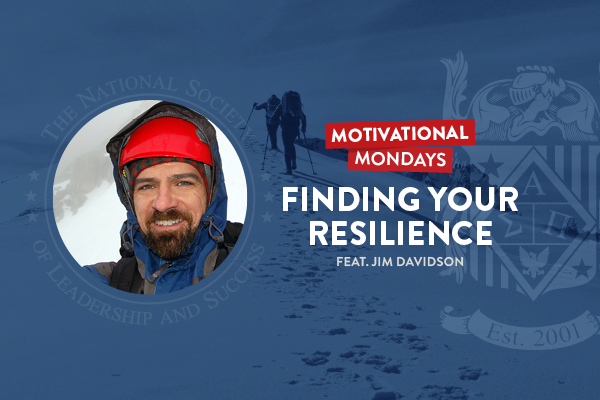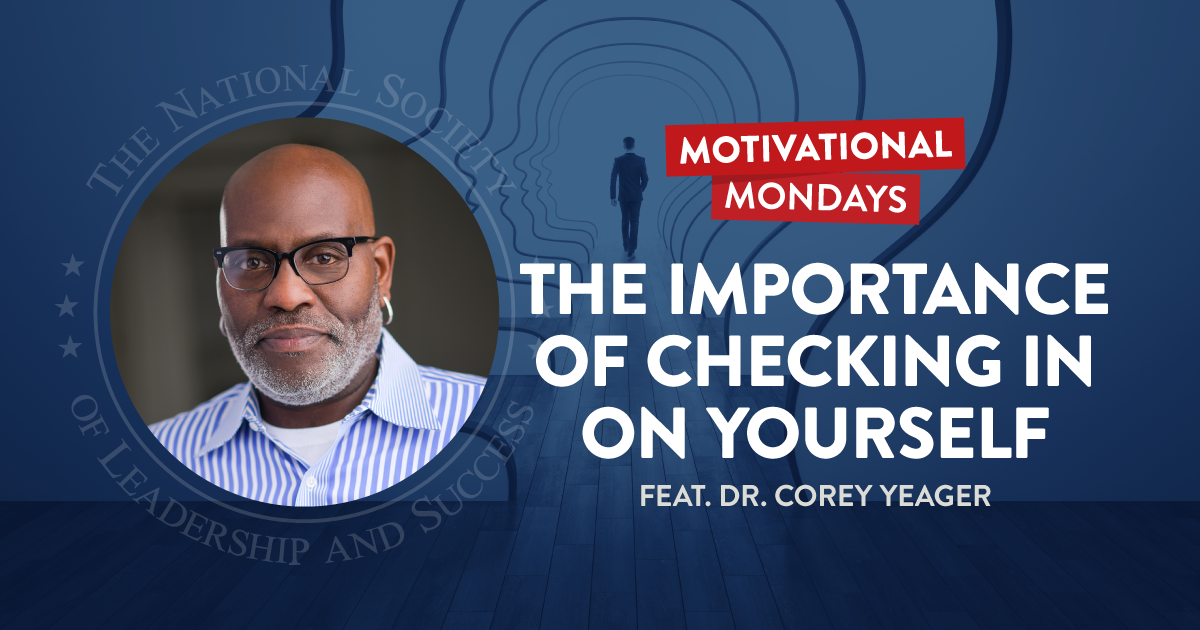Subscribe to Motivational Mondays on your favorite podcast platform!
Have you ever thought of what you might do in a true life or death situation?
Six years ago, Jim Davidson was climbing Mount Everest when the largest earthquake in 80 years hit Nepal, triggering an avalanche that would kill nearly 9,000 people and 18 of his climbing mates.
In this week's episode, Jim shares his terrifying tale, how he survived it, and how we can all prepare better for adversity through building a mindset of resiliency.
GROWTH THROUGH POST-TRAUMATIC STRESS
We all endure challenging times at some point in our lives. Still, it's safe to assume most of us will never find ourselves trapped on Mount Everest in an avalanche. However, we all experience traumatic things, whether personal or events shared collectively by others — like earthquakes and pandemics. And no matter what, the common outcome for all of us is stress.
Stress is often a life-disrupting response to trauma that can be debilitating until we figure out how to work through it. Jim shares that many of us take the approach of just wishing the pain away, "We kind of hope the bad thing is gone, and life will go back to normal. But it's not going to go back quite the same way because things have changed — big things have changed."
To truly overcome these events means doing the hard work of facing your new reality. Psychologists now conclude that often, you can grow from your traumas by addressing them. Acknowledging your fears allows awareness so that you can build coping skills, strength, and renewed levels of commitment. That's post-traumatic growth.
BUILDING A MINDSET OF RESILIENCY
Building a mindset of resiliency seems like an ideological notion, but Jim expresses it is something we all can achieve over time. Of course, we’re all born with natural inclinations and our upbringing can contribute to how we handle life's curveballs. Jim stresses, resilience is "absolutely a learnable skill."
In his book, The Next Everest, Jim explores developing his resiliency from working with his Dad doing industrial painting jobs. He reflects, "When I was a young person, like 9 or 10 years old, I was climbing ladders. By the time I was 12, I was walking roofs without any safety ropes on. I could operate a crane before I could drive a car, literally."
At such a young age, Jim learned to step outside of his comfort zone under the trusted mentorship of his father and uncles. While his story is unique, he makes his point clear, "It might be just taking very small steps outside your comfort zone — if you can walk 2 miles, maybe you can try and walk a 3.5-mile race, a 5k. And if you could do that, maybe you can run a 6-mile race."
Slowly expand your skill base as you evolve into a better version of yourself, and that makes you more resilient and ready to take on the next thing that happens in your life.
EXHIBITING CONFIDENCE IN THE FACE OF FEAR
One of the main ways to conquer our fears is understanding that we must not wait for someone else to resolve them. As Jim points out, if you've ever been in a difficult situation and said to yourself, "Somebody needs to do something about this" — Jim would agree, but also says, "that someone is probably you."
Simply by recognizing that something needs to be changed is the first step. The next step is trying to solve it, even if you don’t have all the solutions or skills needed at that moment. According to Jim, the courage to step forward means you have instincts that indicate you have at least some of what it takes to make a difference.
It is rarely easy to make significant changes and achieve higher goals. And, often it’s scary to even consider the immense challenge in front of you. That’s okay. As Jim explains,"If it makes you nervous, it's probably the right goal; it's probably the right moment to step forward and lead."
Jim's advice to look inside ourselves to conquer fear is more than just anecdotal. He's applied it to real-life tragedies more than once. Years before surviving the earthquake and avalanche on Everest, he and a friend endured a terrifying fall in 1992 while climbing Mount Rainier in Washington State. They were tied together while crossing a bridge that suddenly collapsed. Jim survived the 50 ft drop, landing in a crevasse. However, his friend, who fell 80 feet, perished.
Jim emotionally reflects on that tragic day, "That was a pivotal point in my life. And when I looked up, the walls above me went vertical and then overhanging — and I thought "this can't be done, that's it, I'm dead." And I felt ready to give up at that point, really. And that's when I had to look inside myself and try to find some source of resilience, some source of determination to try and climb out of that crevasse."
Finding the determination to "climb out of a crevasse" is the perfect metaphor for Jim's life philosophy — any adversities we face, great or small, often it's up to us to be that "somebody" to do "something" about it.
NSLS members listen to the bonus episode to learn how to plan for the best while adapting to unexpected challenges and how to utilize patience as a form of perseverance.
Resources:
-
Order Jim's book, The Next Everest to read more about Jim's story and how he overcame his fears
- Connect with Jim on Facebook and Twitter
-
Check out other Motivational Mondays episodes














